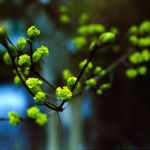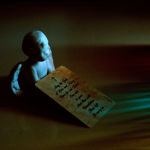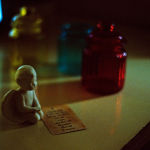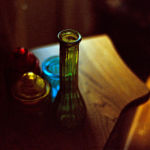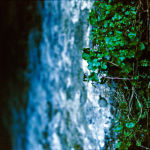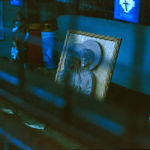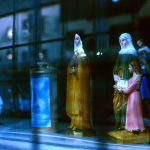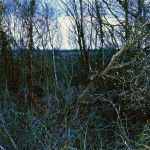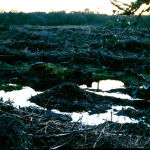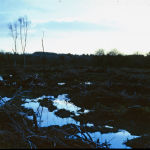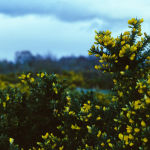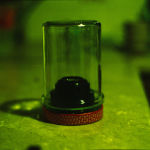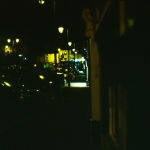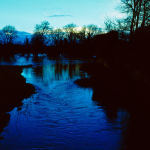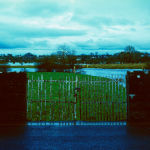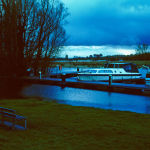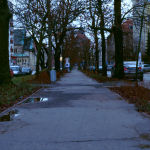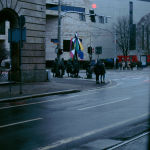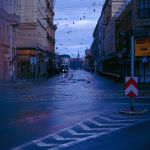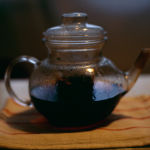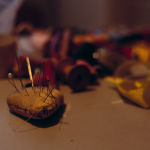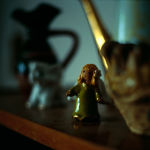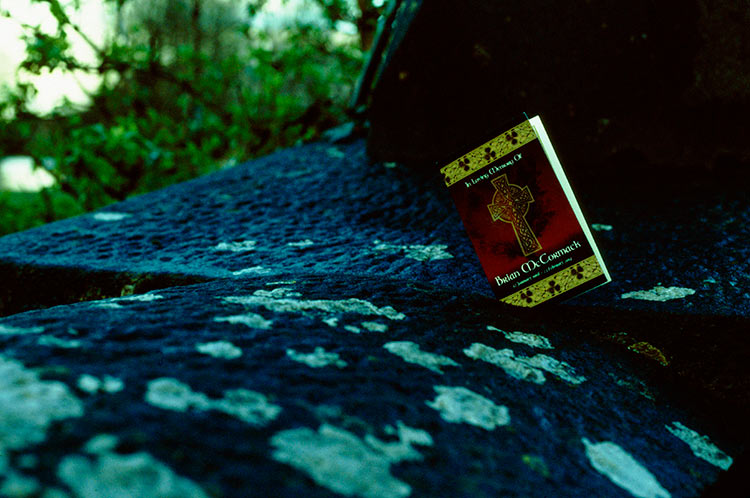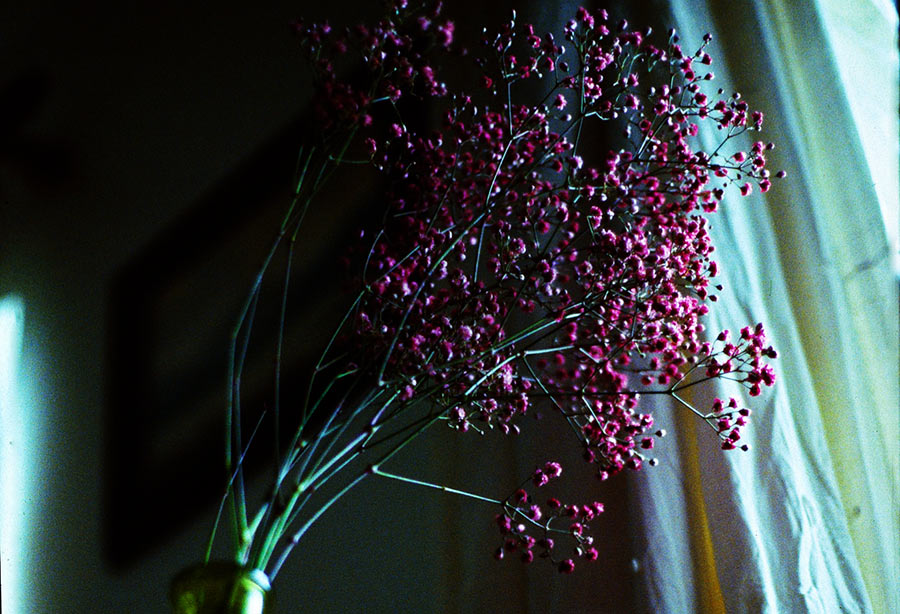
Currently there is no ISO 400 (not to mention 800) slide film on the market.
In poor lighting conditions you can still use ISO 100 diapositive film and a tripod together with longer exposure times. But what if you want to shot handheld? Shot action with high shutter speeds? Shot a concert? Family event?
Well then you need to push develop the available ISO 100 film.
Below you can view and download hi resolution examples of 3 stop push of Kodak Ektachrome E100 slide film, 2018 formula. The film has box rating of 100 ISO. The sample photos were metered at 800 ISO and push developed @800 ISO by extending first developer time.
Table of Contents
Ektachrome E100 3-stop push image gallery
Download (full resolution tiff+jpeg scans, zipped)
Click below to download full pack of high resolution samples.
Download Hi-Res Images in tiff /jpeg format (724 Megabytes)
Contents of download
The download contains:
3-stop push Unedited tiff files downsampled to 4000px across. They still contain less actual image data/details than file size suggests, safe to treat these as maximum possible quality from this scanner with a good bit of overhead.
3-stop push Edited jpeg files – contrast, color correction, some manual cleaning of stuff missed by dust and scratches removal. These should be treated as possible final result.
A note: there is a good bit of noise in the scans – this is due to the scanner itself. I wanted to deliver tiff files that are as much unedited as possible.
1-stop push files of 2018 Ektachrome @ISO 200 (metered at 200 iso as well). These are there so you can compare the difference between one and three stops push.
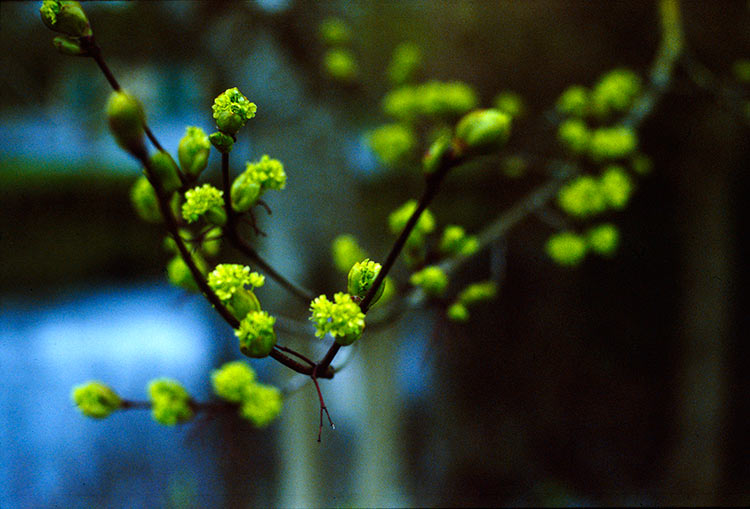
Scanning Procedure
The images were scanned using Plustek Optic Film 7400 and Silverfast 6.0 (same hardware and scan quality as Optic Film 8100 – upgraded Silverfast on 8100 model produces no image improvement, good test/review available here) double exposure, no gane, no sharpening.
Scanned at 7200 dpi, downsampled to reasonable 4000 px wide. Software dust and scratches removal was used as this model does not support infrared-based removal.
Scanning was done without slide frames, from 6-exposure film strips.
Note – to force OpticFilm 7400 (or 8100) scanner to scan with maximum possible resolution you need to bump the scanning resolution to the maximum, even though there is no actual information in these bloated 200+ MB files it produces. Therefore the files were downsampled to size that is closer to the amount of the actual image data they contain.
The scanner I used is by no means a good one by today’s standards.
It is better than flatbeds, but worse than not that much more expensive scanners, like Reflecta Crystal Scan 7200 or 10T for example. Having said this, the quality difference is not enough for me to trade my 7400 (I bought it used for 110 euro + delivery, great bargain) for anything in the 400-500 euro region.
I guess that if you are looking for maximum resolution tiff scan samples of Plustek OpticFilm 7400 or 8100 film scanner (same thing) the download may be of help too.
Ektachrome 1-stop push images (for quick comparison)
The images below were metered and shot at ISO 200. Push development (1 stop) first developer time extended as per Tetenal E6 kit’s user’s manual. I always shot this film pushed by 1 stop as I feel there is virtually no penalty quality-wise.
It is not hard to notice that the quality difference between 1 and 3 stops push is significant.
Projection (Paximat 250 AF-I)
Projection video
The video below shows samples projected on Paximat 250 AF-I (autofocus) projector. It can give you good approximation how the pushed slides look like when projected. In reality the slides come up brighter (250 Watt of power is what you should go for when looking for a projector), but I wanted to avoid editing the video.
Slide mounts
The slides were mounted in Gepe mounts with anti-Newton ring glass. In my experience such glass does negatively affect projection quality. However the extra protection for my slides is worth trading off this small bit of quality.
The effect is very subtle and you would need to know what to look for in order to spot it. It can be described as fine wavy pattern (especially visible in bright areas) and slight loss of sharpness.
As mentioned before, scanning was done without mounts, from film strips. The effect of antinewton mounts could be only seen (barely if at all) on the video above.
Projected image properties
While the slides have a lot of grain, the noise you can see on the video is a purely digital byproduct. In real life, the slides are grainy, but completely free of noise. And of course they are completely pixel-less.
I have no doubt that projection is the most pleasing way of experiencing diapositives. These extremely pushed images hold up extremely well when projected, in my opinion way better than when scanned. I would say that the more pushed the slide is, the better it looks projected compared to scanned file.
The quality of the slides viewed through my beloved Sawyers Bi-lens 35 viewer (nice to have if you shoot slides) leaves no reasons to complain either.
My general conclusion is that the image quality is perfectly ok when experienced through analog means. Problems apparent when examining digital scans are not an issue while projecting or using a slide viewer.
Another words: the quality issues caused by 3 stop push are greatly exaggerated in the digital world.
Camera and shooting parameters
Samples were shot with Canon 30v and f1.8 50mm mk II Canon prime lens. It gives me a DSLR shooting experience with film instead of digital sensor.
It has modern light metering system that is not so much behind the current tech. The lens is modern too and it lacks any “vintage” characteristics. It is a normal autofocus DSLR prime lens that is being used by digital photographers today.
You will be hard pressed to get sharper images off vintage lenses, despite all the hype around some of them.
A tip: want super-vintage pics? Use Helios 44 and shoot it wide open. It is like time travel to the nineties. When you shoot a roll using it, you will understand why I did not use Helios to shoot this test.
Instead, I deliberately choose the most modern lens/camera combination I own. This way as little as possible is left to metering errors and individual lens quirks.
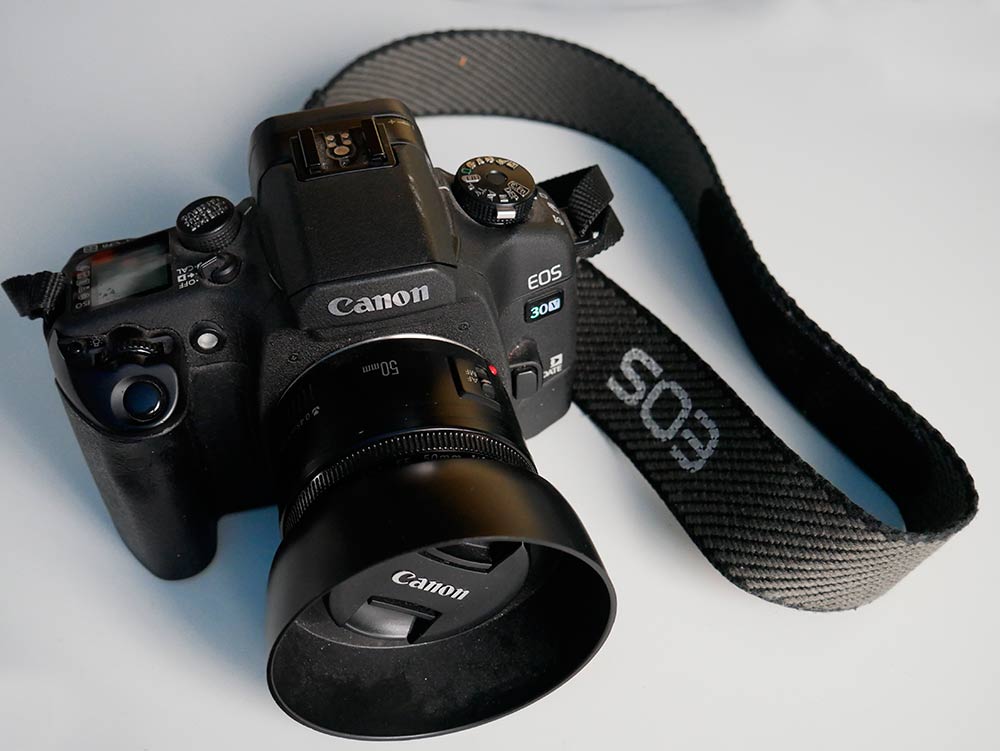
All images were shot handheld, with slowest shutter speeds of 1/45 sec. All shots taken in aperture priority mode bar one night shot that was manually underexposed @f1.8 and 1/45 sec shutter to give it a chance of being sharp.
Lighting conditions and goals of test
The lighting conditions the samples were shot in can be described as late evening outside and indoor shots done in artificial or natural light. No flash was used on any of the photos. These I believe would be common conditions requiring a push.
When shooting the sample photos I was looking for lighting conditions that would give me aperture of f1.8-f2.8 for closeup shots and aperture f5.6 for landscape type of shots – while maintaning 1/90 and faster shutter speed.
I was trying to shot close to the minimum comfortably usable conditions.
This is because in my experience even seriously pushed film (2-3 stops) tends to perform better if shot in good lighting conditions. You do not need to push in good conditions.
I wanted to see what happens to Kodak Ektachrome if the conditions are bad. When you have a choice between extreme push or no shots at all.
I wanted to shot in conditions where you really need the 3-stop push in order to be able to take the photo handheld. Personally I cannot go below 1/60 of a second and expect a good shot. 1/90 of a second and upwards is where I can have some confidence that the shot will not be spoiled by movement.
If you need 800 ISO speed slide film for sports or action freeze shots, you can use the examples to see the worst possible quality that will come out of it.
Developing process
Chemicals used
The film was developed in fresh and previously unused Tetenal E6 kit. This way the possibility of error was minimised.
The manufacturer provides different bath times for developing consecutive rolls of film (roll 1 to 2 has shorter first developer time than 3-4 and 5-6 etc) but they do not give different push times depending on how many rolls you have already developed in your solution.
The extended development times are meant to make up for the fact that reactive power of chemicals deplete with each roll. My guess would be that push times should be extended with each roll too. The Tetenal E6 instructions do not provide such extended push development times.
My assumption was that push-development times given in Tetenal’s instructions apply to freshly mixed chemicals. By using freshly mixed chemicals I made my results easily repeatable.
I have a good DIY temperature control setup, so temperature variation can be taken out of the equation here. Developing temperature was as per Tetenal kit’s instructions.
Push: extended first developer time
Please take into consideration that the manufacturer also does not provide 3 stop push times – these were guestimated (16:30 minutes) based on 1 and 2 stop push time increments given in kit’s manual.
This means that the effects achieved may be/are skewed by an error in development time calculation. I estimate that the error is within one minute of development time.
With 16:30 minutes of total first developer time used the results should be less than 10% too bright or too dark. The error could be made only in the last, 3rd stop of the push – the one that developer time was not provided for and had to be estimated.
Therefore, in terms of stops of light, the error should be well below half of a stop under or overexposed.
Conclusions and final thoughts
There is no denying that at 800 ISO the brilliant quality of E100 film is visibly degraded. Having said that there is still a lot of detail in the photos.
I used a couple of them as product photos on this website – thus the subject. I simply did not want to waste the film by shooting samples I would later throw away.
The mood of the slides is appropriate – so I can report that I used Ektachrome film pushed by 3 stops not only for hobby, but for commercial activity as well.
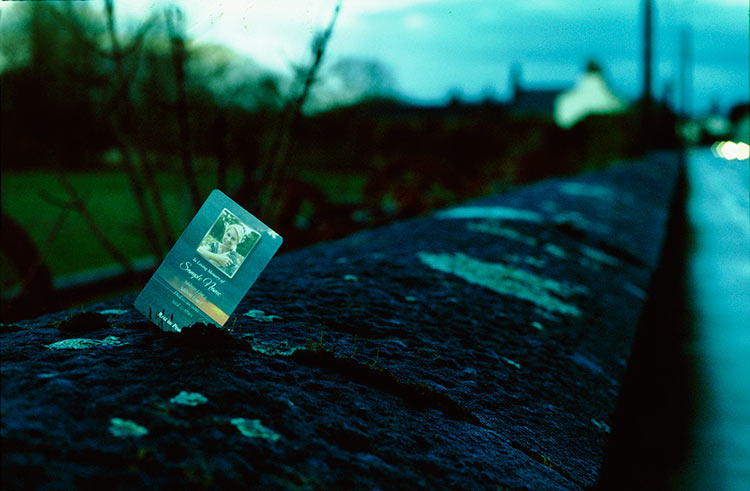
I never shot E100 at box speed. I always push it by one stop to ISO 200 (some examples also included in the download). Thus, for me the baseline quality is Ektachrome already pushed by one stop.
If you are used to shooting Ektachrome at box speed, you will probably perceive the quality loss @800 ISO as more severe than I do.
When push-developing E6 process film by 3 stops you extend the first developer time almost 3 times compared to no push. Standard first developer time is 6 minutes – my 3 stop push calculated at 16:30 minutes. So less than 10% shy of 3 times increase.
This is bound to trash the quality and it does.
Are the images usable? I would say they are perfectly usable. Film is not about getting perfect image after all. The 3 stop push emphasizes the analog nature of the images – and I have seen Ektachrome photos that look like digital more or less.
I think this experiment shows that pushing of Kodak E100 – even as extreme as 3 stops – is a viable option. The results lean towards lomography end of things but let’s be honest – the whole film photography is.
I am not shooting slide film to get quality results. I want interesting, a bit unpredictable grungy photos with plenty of character that can be projected on a large screen.
Kodak Ektachrome E100 pushed to ISO 800 fits the bill perfectly.
I am aware that every single shot in the sample set could be taken at box speed using a tripod. In real life I am going to use E100 @800 for handheld concert photos, quick nigh (you actually can shot handheld at night) and evening shots and most of all for poorly lit indoor photos with no flash.
I definitely will shot more Ektachrome @800 ISO and also investigate 2 stop push coupled with faster lens. The latter I believe may provide significantly better quality without sacrificing the ability to shot handheld in poor lighting conditions.
Anyways, like with any other slide film, pushed or not: avoid high contrast and you’ll be fine. Even with Kodak Ektachrome E100 pushed to ISO 800.
Please feel free to use all the images in the download in your own blog posts should you wish to have your say on the subject or indeed if they give you an idea for any kind of post at all. Please quote this post as a source.





